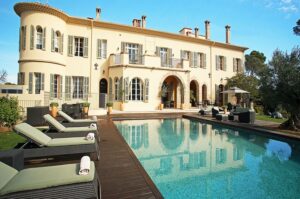
Spiders are common in homes, and many people mistake them for pests. But they’re actually rather beneficial since they get rid of other pests. Interesting information about them, including their look, residence, and purpose, can be found on this page. We’ll also provide you with tips on how to distinguish between safe and harmful spiders to aid in the removal of pests.
Common Household Spiders Cellar Spiders (Pholcidae)
Cellar spiders have long, thin legs. This makes them easy to spot. They’re also known as “daddy long-legs”. These spiders’ typical colours of pale brown or grey aid in their ability to blend in with their preferred dark, moist settings. Cellar spiders create erratic, loose webs in corners and other hidden spots, and they’re often found in crawl spaces, basements, and cellars.
Even though they have a fragile appearance, cellar spiders are proficient hunters. Their lengthy legs help them immobilise prey from a distance, reducing the chance of getting hurt by scuttling insects. Vibrating in their webs when disturbed is one of their peculiar habits. It’s believed that this action confuses predators and makes the spider more difficult to capture. It’s interesting to note that cellar spiders often consume other spiders, sometimes even larger ones. However, this behaviour helps control other spider populations within the home.
Cobweb Spiders (Theridiidae)
Cobweb spiders have small, round bellies. They can be pale, yellow, or black. You can find them in quiet places in your house, like closets, attics, and behind furniture. These spiders weave clumsy, sticky webs that are intended to entangle insects.
In this family, the black widow spider is well-known. Its red hourglass-shaped pattern on its abdomen helps you identify it from other spiders. Cobweb spiders make very strong silk to trap their food. You can find leftover food on their webs. This can help you know if they’re in your house. Cobweb spiders can help control other insects. However, if their webs get too large, they may start to cause problems.
Wolf Spiders (Lycosidae)
Wolf spiders are usually dark or grey in colour, having a strong and hairy appearance. They have special patterns that help them hide in their surroundings. These spiders like to be outside. But they might come into homes when it’s cold outside. In the winter, they are searching for warmth.
Unlike many other spider species, wolves don’t build webs to entice prey. Instead, they hunt on foot, locating insects with the help of their fast reflexes and excellent vision. Wolf spiders rarely bite people and usually only cause minor injuries from their fangs. They aren’t particularly hostile towards humans. Mother wolf spiders have a unique method of raising their young. They travel with their egg sacs, and the spiderlings climb onto their mother’s back after the eggs hatch. Until kids are old enough to care for themselves, they remain there. This is a special kind of care that shows how much these spiders love their young.
Fascinating Facts About Spiders Hunting Techniques
Spiders use a range of strategies to hunt. Cellar spiders catch and immobilise their victim from a safe distance using their long legs. Spiders use their webs to catch and hold insects. Wolf spiders are fast and can chase their prey. Jumping spiders have great eyesight and can jump far to catch prey. Trapdoor spiders hide their homes with doors that look like the ground to trick insects.
Silk Production
Spiders produce amazing silk with unique properties that change according to what they require. For instance, the strong and flexible silk of cobweb spiders aids in their ability to capture prey. Silk is used by spiders to weave webs, drag lines, egg sacs, and meal wrappers. These aids enable them to move securely. Spiders can use silk for a variety of purposes, including building shelters and aiding in reproduction. As an example, orb-weavers are capable to producing up to seven distinct kinds of silk, each of which serves a distinct function in their day-to-day existence.
Benefits of Pest Eradication
Less insecticide is needed to kill insects because spiders decrease the population of pests like flies and mosquitoes. By eating insects, spiders help to keep our houses and surroundings healthy. They also aid in halting the transmission of illnesses that mosquitoes and other insects carry. Knowing how spiders help us can change how we think about them.
Identifying Harmless vs. Dangerous Spiders Harmless Spiders
The majority of spiders that are often found in homes pose little threat to humans. For example, cellar spiders are harmless because their poison is weak and cannot puncture human flesh. Because of their webs, these spiders are more of an annoyance than a danger to people. In contrast, wolf spiders are larger and more robust, and because of their hairy bodies and girth, they may seem dangerous. But usually, they don’t bite people unless they perceive a clear threat. Their bites can occasionally produce slight irritation, swelling, or redness, but they are generally harmless and only cause modest symptoms. It’s crucial to remember that wolf spiders would rather stay away from us and would rather pursue insects that intrude into our homes. Therefore, by comprehending their behaviour, we may promote peaceful cohabitation and lessen needless fear.
Dangerous Spiders
But some spiders can be dangerous to people. The crimson hourglass pattern on the abdomen of the black widow spider serves as a telltale sign of its identity. Its venom can cause severe health problems as well as unbearable pain. The violin-shaped mark on the back of the brown recluse spider can lead to serious health issues when it bites. These problems include necrosis of the skin and systemic symptoms that need to be treated right away.
Conclusion
We might feel less afraid and eradicate pests more rapidly if we are aware of the kinds of spiders that reside in our homes and how they act. It’s simpler to live with insects and manage your house securely if you know how they help control pests and identify the problematic ones. We can understand these interesting animals’ importance to the environment and keep our homes safe by learning more about them.
Spiders are amazing animals with a variety of hunting skills, the ability to make silk, and to control pests. Many of them are safe and play a major role in keeping insect populations under control, even though others do pose dangers. Knowing how important spiders are in killing pests makes us respect these creatures and encourages us to handle them better in our homes.








